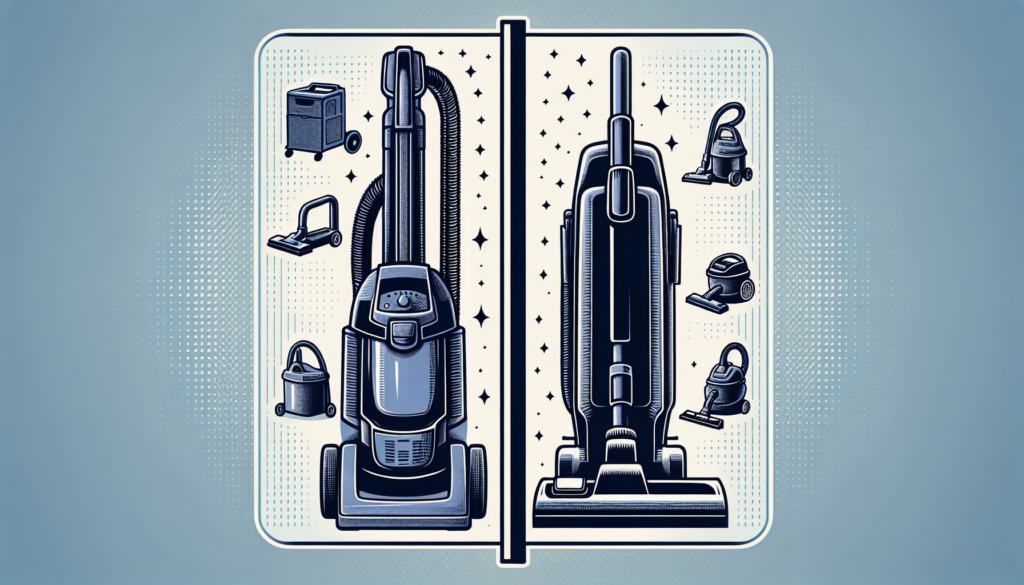When it comes to buying a new refrigerator, you have a lot of options to consider. Two popular choices are the top freezer and the French door refrigerator. Both have their own unique features and benefits, making it important to understand the differences between the two. In this article, we will explore the pros and cons of each type, helping you make an informed decision and find the perfect refrigerator for your needs. Whether you’re looking for more storage space or a sleek design, our expert buying guides on BuySellCloud.com will provide you with all the insights and tips you need to make a confident purchase decision.

Energy Efficiency
Energy Star certified models
When shopping for a new refrigerator, it’s important to consider energy efficiency. Energy Star certified models are designed to consume less energy compared to non-certified models. These refrigerators meet strict energy efficiency guidelines set by the Environmental Protection Agency (EPA), resulting in lower energy usage and reduced greenhouse gas emissions. By choosing an Energy Star certified refrigerator, you can not only save on your utility bills but also help protect the environment. Look out for the Energy Star label when browsing for refrigerators.
Energy usage comparison
To further evaluate the energy efficiency of different refrigerators, comparing their energy usage is crucial. Energy usage is typically measured in kilowatt-hours (kWh) per year, and this information can usually be found on the refrigerator’s Energy Guide label. By comparing the energy usage of different models, you can make an informed decision about which refrigerator will be more energy-efficient and cost-effective in the long run.
Annual operating costs
In addition to considering the energy usage, it’s essential to take into account the annual operating costs of a refrigerator. These costs include the electricity required to run the appliance throughout the year. By comparing the operating costs of different models, you can determine which refrigerator will be the most economical choice for your household. Keep in mind that energy-efficient models may have higher upfront costs but can save you money in the long term through reduced energy consumption.
Design and Capacity
Overall dimensions
Before purchasing a new refrigerator, you should measure the space where you plan to place it. Consider the overall dimensions of the refrigerator, including its width, height, and depth. Ensuring that the refrigerator will fit comfortably in your kitchen is essential to avoid any disappointments or inconvenience later on.
Refrigerator capacity
The refrigerator capacity refers to the amount of space available for storing fresh food. It’s important to assess your household’s needs and the amount of food you typically keep in your refrigerator. A larger refrigerator capacity may be beneficial for those who frequently entertain guests or have a larger family, while a smaller capacity may suffice for individuals or couples. Consider the number of shelves and door bins provided to help you organize your groceries efficiently.
Freezer capacity
The freezer capacity is equally important to consider, especially if you regularly store frozen items such as meats, frozen fruits, or ice cream. Assess the size of the freezer compartment and the number of shelves or drawers available for organizing your frozen goods. Some refrigerators also offer the convenience of adjustable or removable freezer shelves to accommodate larger items.
Shelf and drawer arrangement
The arrangement of shelves and drawers within the refrigerator can significantly impact its usability and organization. Look for configurations that suit your needs, such as adjustable shelves that can be modified to fit taller items. Consider the presence of door bins, dairy compartments, and deli drawers for additional storage options. A well-designed refrigerator with versatile shelving and drawer arrangements can make it easier to access and organize your groceries.

Accessibility and Organization
Door style and placement
The door style and placement of a refrigerator can greatly affect its accessibility and functionality. One popular option is the top freezer refrigerator, where the freezer compartment is located above the refrigerator compartment. This design allows for easy access to frequently used items in the refrigerator section and requires less bending to reach them. On the other hand, French door refrigerators have two side-by-side doors for the refrigerator compartment and a bottom freezer drawer. This style offers a wide refrigerator space and can be more convenient for accessing the freezer compartment without needing to bend down.
Ease of access to food and beverages
Consider how easy it is to access your food and beverages within the refrigerator. Look for features like adjustable shelves, sliding or retractable shelves, and door-in-door compartments that allow for quick access to frequently used items. Some refrigerators even offer specialized compartments for storing beverages or snacks, making them easily accessible for everyone in the household.
Organization of shelves and drawers
An organized refrigerator can save you time and energy when searching for items. Look for refrigerators with ample shelving and adjustable features to accommodate items of various sizes. Consider models with adjustable or customizable door bins for storing condiments, juices, and other frequently used items. Additionally, drawers with dividers or temperature control settings can provide a designated space for fruits, vegetables, and deli items, ensuring optimal freshness and organization.
Additional compartments and features
Many modern refrigerators come equipped with additional compartments and features to enhance organization and convenience. Look for features like dedicated drawers for storing meat or deli items at the optimum temperature. Some models include special compartments for cheeses, wine, or even a built-in fresh produce preserver. Consider your specific storage needs and preferences when evaluating the additional compartments and features offered by different refrigerator models.
Temperature Control and Freshness
Temperature stability
Maintaining the right temperature within your refrigerator is crucial for food safety and freshness. Look for refrigerators that offer temperature stability and precise control. Some models feature advanced temperature management systems that help evenly distribute cool air throughout the entire refrigerator, ensuring consistent temperatures in all compartments. This can help extend the shelf life of your food and beverages without the risk of spoilage or freezer burn.
Humidity control
Proper humidity levels are essential for preserving the quality and freshness of various food items. Some refrigerators offer humidity-controlled drawers to help regulate the moisture and humidity levels, ensuring that fruits and vegetables stay crisp and fresh for longer periods. This feature can be particularly beneficial for those who regularly purchase fresh produce and want to extend their lifespan.
Preservation of food quality
Preserving the quality and taste of your food is a top priority. Consider refrigerators with features designed to extend the shelf life and maintain the flavors of different food items. Look for models with integrated technologies like air filters and air purification systems that help eliminate odors and reduce bacteria growth. Some refrigerators also offer specialized compartments or settings for preserving delicate items like meats, cheeses, or wines. A refrigerator that prioritizes food quality and freshness can help you minimize food waste and enjoy your groceries for longer.

Ice and Water Dispenser
Availability of dispenser
An ice and water dispenser can add convenience to your daily routine. Consider whether you prefer a refrigerator with a built-in dispenser. Some models offer external dispensers located on the door, allowing you to easily access ice and cold water without opening the refrigerator. Others may have a dispenser placed inside the refrigerator, typically located on the top shelf. Ensure that the placement and capacity of the dispenser meet your needs.
Built-in water filter
If you prefer filtered water, look for refrigerators that include a built-in water filter. These filters help remove impurities from your tap water, providing you with clean and refreshing drinking water. Regularly replacing the water filter is necessary to maintain the quality and effectiveness of the filtration system. Consider the cost and availability of replacement filters when choosing a refrigerator with a built-in water filter.
Icemaker type and capacity
When selecting a refrigerator with an icemaker, consider the type and capacity of the icemaker. Some models have a traditional ice tray system where ice cubes are manually dispensed into a storage bin. Others feature automatic icemakers that produce ice continuously, ensuring you never run out. Additionally, consider the capacity of the ice storage bin to ensure it can accommodate your ice consumption needs.
Noise Levels
Quiet operation
A quiet refrigerator can be particularly important if your kitchen is open-concept or if you prefer a peaceful environment. Look for refrigerators that are designed to operate quietly, minimizing any disruptive noise. Do your research and read customer reviews to get an idea of the noise levels of different models. Some refrigerators boast advanced sound insulation or sound-dampening technology to provide a quiet and comfortable experience in your kitchen.
Location of compressor
The location of the compressor within the refrigerator can also affect noise levels. Some refrigerators have a rear-mounted compressor, while others have a bottom-mounted or top-mounted compressor. Rear-mounted compressors tend to generate more noise as vibrations may be transmitted through the cabinet. On the other hand, bottom-mounted or top-mounted compressors can help reduce noise levels as they are isolated from the main cabinet. Consider the location of the compressor when evaluating the potential noise levels of different refrigerator models.
Price Range
Average cost comparison
Refrigerators come in a wide range of prices depending on their features, capacity, and brand. It’s essential to establish a budget before beginning your search. Compare the average cost of refrigerators within your desired category, such as top freezer or French door models. Keep in mind that additional features and larger capacities will generally result in higher prices. Consider the long-term savings that an energy-efficient refrigerator may offer, as it can help offset the initial higher cost.
Long-term cost analysis
When considering the price range, it’s important to evaluate the long-term cost analysis of owning a refrigerator. Energy-efficient models may have higher upfront costs but can potentially save you money in the long run through reduced energy consumption. Additionally, consider the expected lifespan of different models. A refrigerator with a longer lifespan may be a better investment, despite a higher initial cost. Take into account factors such as energy efficiency, maintenance requirements, and warranty coverage when assessing the long-term cost implications.
Maintenance and Durability
Cleaning and maintenance requirements
Regular cleaning and maintenance are essential for the longevity and optimal performance of your refrigerator. Look for models with easy-to-clean surfaces and removable shelves or drawers. Some refrigerators also feature spill-proof shelves or antimicrobial properties to help prevent the growth of bacteria. Consider the maintenance requirements outlined in the user manual to ensure that they align with your lifestyle and cleaning preferences.
Expected lifespan
The expected lifespan of a refrigerator can vary depending on various factors, including brand, usage, and maintenance. On average, refrigerators can last between 10 to 15 years. However, some high-quality models may have even longer lifespans. Consider the reputation of the brand and the reviews and ratings from customers to gauge the durability and longevity of different models. Investing in a refrigerator with a longer expected lifespan can potentially save you money on premature replacements.
Warranty coverage
When purchasing a new refrigerator, consider the warranty coverage provided by the manufacturer. Warranties can vary in terms of duration and coverage. Look for models that offer a comprehensive warranty that covers both parts and labor. Additionally, consider any extended warranty options that may be available. A warranty provides peace of mind and can help protect you from unexpected repair costs.
Installation Considerations
Spacing and fit requirements
Ensure that you have enough space in your kitchen to accommodate the refrigerator you intend to purchase. Take into consideration not only the overall dimensions of the refrigerator but also any clearance requirements specified by the manufacturer. Leave ample space around the refrigerator for proper ventilation to ensure efficient operation. Measure the width of any doorways or stairs the refrigerator will need to pass through during installation to guarantee a smooth and hassle-free setup.
Door swing direction
Consider the door swing direction of the refrigerator and how it will fit into your kitchen layout. Most refrigerators offer reversible door hinges, allowing you to choose the door swing direction that best suits your needs. Ensure that the door swing will not obstruct any nearby cabinets, walls, or countertops. Optimal door swing direction can enhance accessibility and convenience when using the refrigerator.
Water connection
If you are considering a refrigerator with a built-in water dispenser or icemaker, evaluate the availability of a water connection in your kitchen. Ensure that there is a suitable water supply line nearby to connect the refrigerator to. Additionally, consider the location of the water connection within the refrigerator and whether it aligns with your preferred setup. Some models may require professional installation for the water connection, so keep this in mind when planning your purchase.
Popular Brands and Models
Top freezer popular models
Top freezer refrigerators have been a popular choice for many households due to their cost-effectiveness and traditional design. Some popular brands known for their top freezer models include Samsung, LG, Whirlpool, and Frigidaire. These models often offer a spacious refrigerator compartment, easily accessible storage, and energy-efficient features. Customer reviews and ratings can provide valuable insights into the performance and user satisfaction of specific top freezer models.
French door popular models
French door refrigerators have gained popularity for their elegant design and convenient storage options. Some well-known brands offering popular French door models are GE, KitchenAid, Bosch, and Maytag. These models typically provide a spacious refrigerator section with multiple shelves and drawers for efficient organization. The bottom freezer drawer allows for easy access without the need for bending down. French door refrigerators often offer advanced features, such as dual evaporators and customizable temperature settings. Investigate customer reviews and ratings to gain a better understanding of the reliability and performance of specific French door models.
Customer reviews and ratings
Customer reviews and ratings can be an invaluable resource when making a purchasing decision. Reading reviews from individuals who have firsthand experience with a particular refrigerator model can provide insights into its performance, durability, and overall satisfaction. Look for common themes and recurring comments in the reviews to get a sense of the refrigerator’s strengths and weaknesses. Consider both positive and negative reviews to make an informed decision and choose a refrigerator that meets your specific needs and preferences.
With the extensive range of refrigerators available in the market, it’s essential to consider several factors when choosing the right one for your home. Energy efficiency, design, capacity, accessibility, temperature control, noise levels, and installation considerations should all be taken into account to ensure you make a well-informed purchase. By carefully evaluating these aspects and considering popular brands and models, you can select a refrigerator that not only meets your requirements but also enhances your overall kitchen experience. Happy refrigeration shopping!




